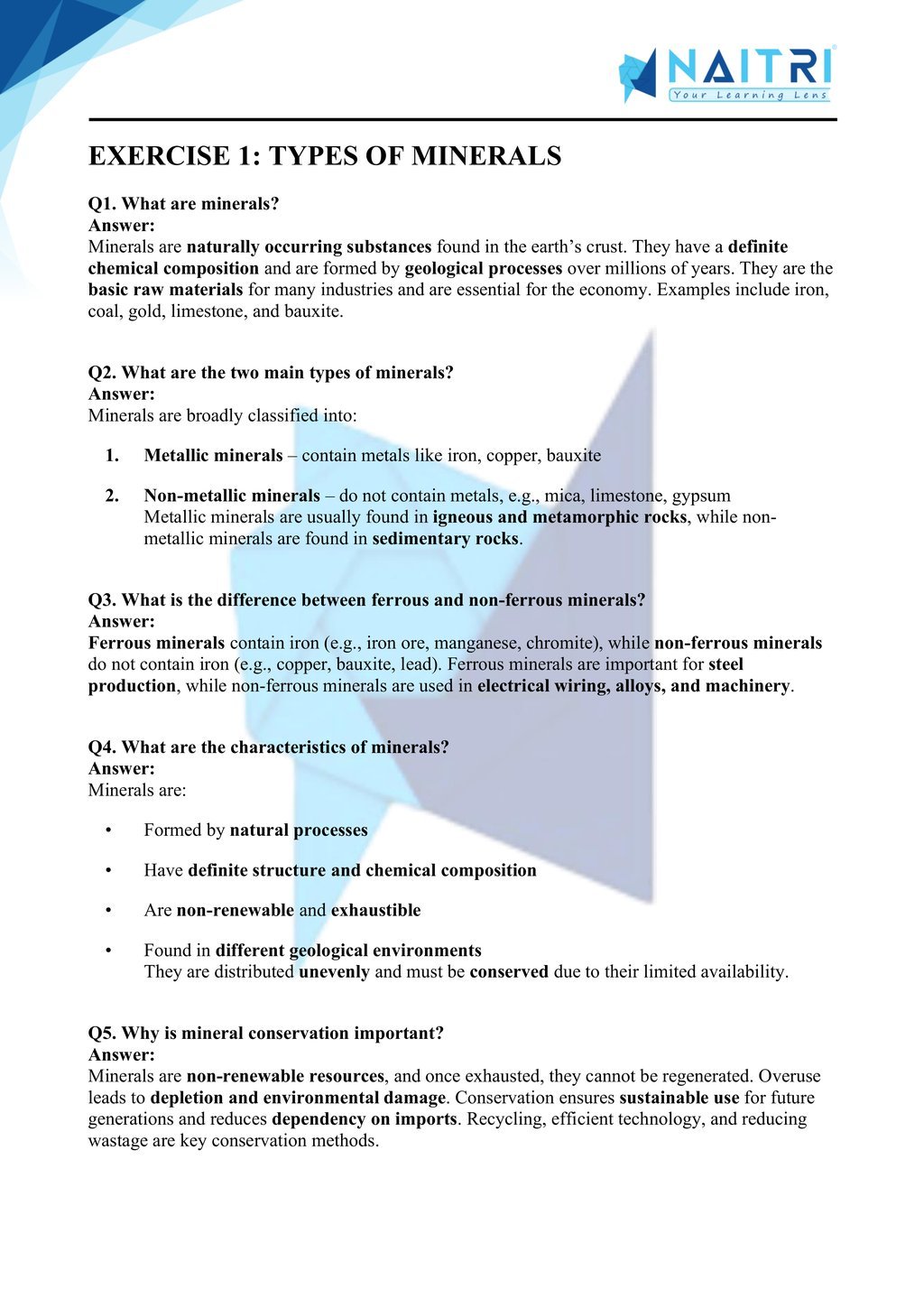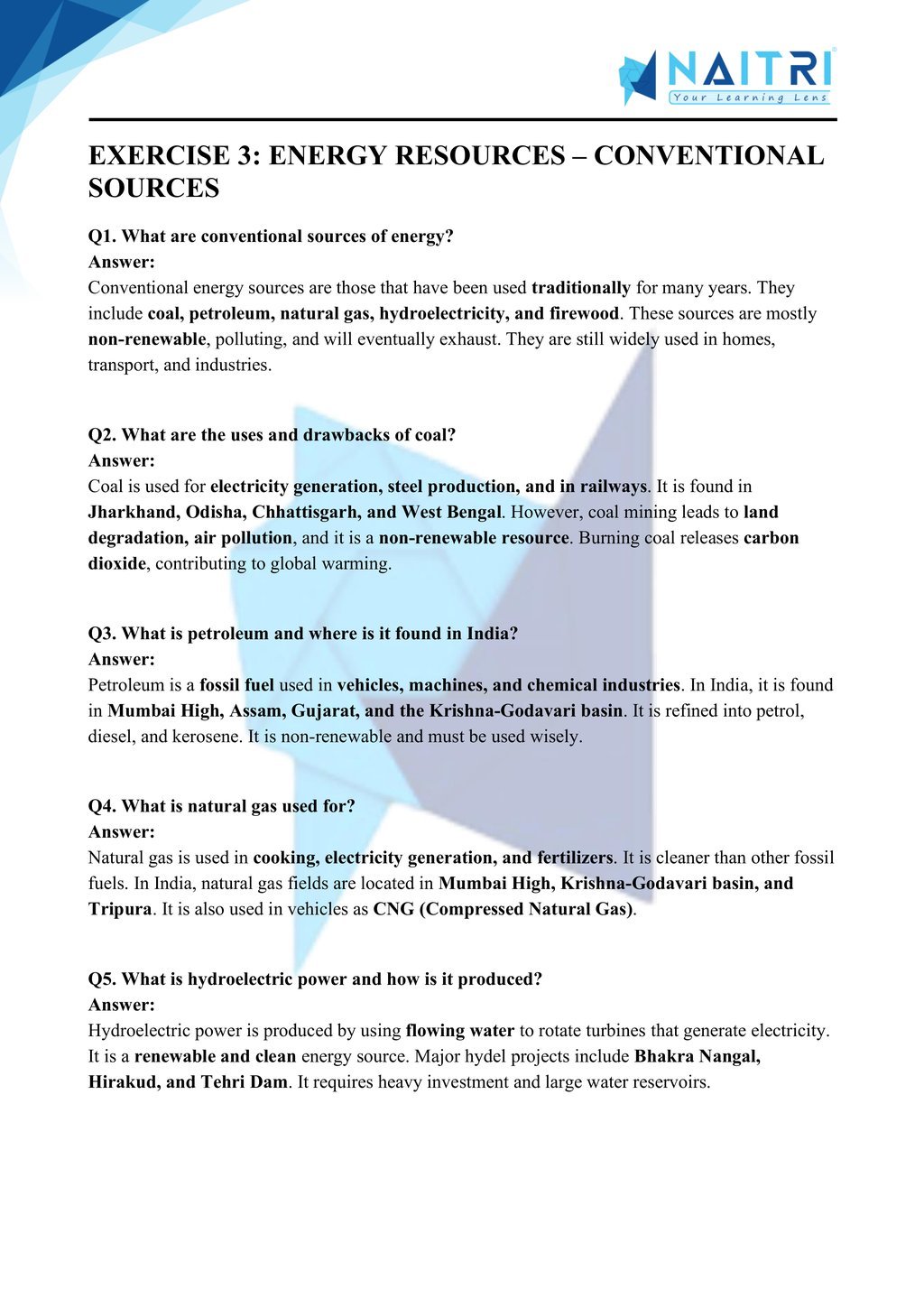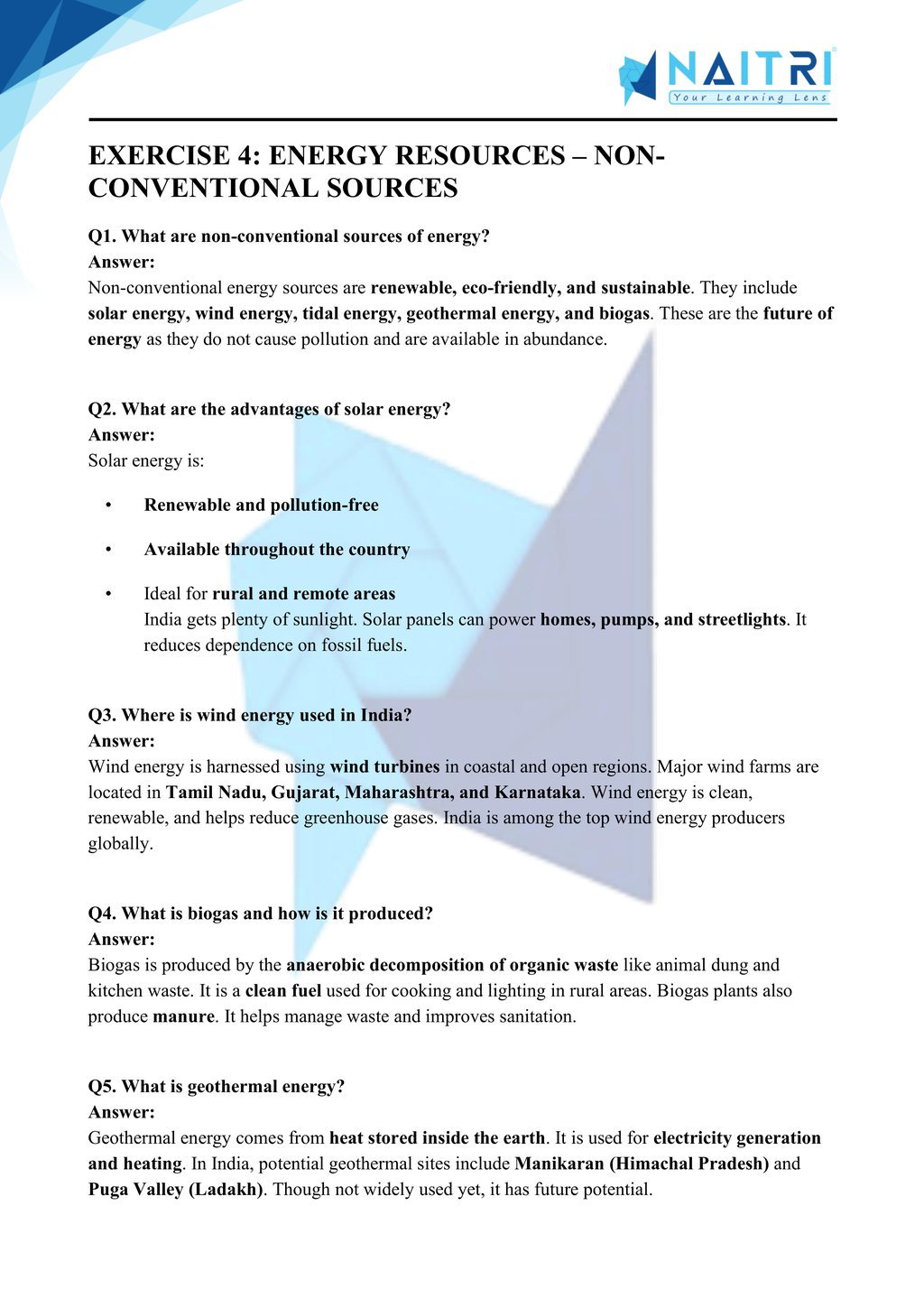NCERT Solutions for Class 10 Geography Chapter 2 – Forest and Wildlife Resources
NCERT Solutions for Class 10 Geography Chapter 2 – Forest and Wildlife Resources are essential for understanding ecological and conservation concepts in the CBSE curriculum. These well-structured answers help students grasp topics like biodiversity, endangered species, conservation strategies, and types of forests. Designed as per the latest syllabus, these solutions strengthen conceptual clarity and improve exam preparation. Ideal for revision and practice, they encourage environmental responsibility and awareness, making them a valuable study tool for scoring well in Class 10 Social Science exams.
NCERT Solutions For Class 10 Geography – Forest and Wildlife Resources – Exercise Images





Experience Science Like Never Before – With AR!
Understanding Forest and Wildlife Resources is now more exciting and immersive! With the NAITRI App, you can explore complex geography concepts through Augmented Reality (AR). Explore forest types grow, wildlife habitats thrive, and conservation strategies come alive — right in front of you. Our AR-powered lessons make learning interactive, 3D, and fun, helping you retain concepts better and enjoy every topic.



Visualize . Interact . Understand . The future of learning is here
Forest and Wildlife Resources – Important Questions with Answers
1. What are flora and fauna?
Answer: Flora refers to the plant life and fauna to the animal life of a particular region. Together, they represent the biodiversity of an ecosystem or geographical area.
2. What is biodiversity?
Answer: Biodiversity means the variety of living organisms—plants, animals, and microorganisms—found in a particular region or on the planet, which interact within ecosystems.
3. Why is biodiversity important?
Answer: Biodiversity ensures ecosystem balance, provides resources like food and medicine, supports climate regulation, and is vital for ecological sustainability and human survival.
4. What are the major causes of forest depletion in India?
Answer: Forests are being depleted due to deforestation, agriculture expansion, mining, urbanization, and infrastructure development, leading to habitat loss and environmental damage.
5. What is deforestation and why is it a problem?
Answer: Deforestation is the clearing of forests for human use. It leads to climate change, soil erosion, loss of biodiversity, and affects rainfall patterns and oxygen production.
6. What is wildlife?
Answer: Wildlife includes all naturally occurring animals and birds, both common and endangered, found in forests, grasslands, mountains, deserts, and water bodies.
7. What are endangered species?
Answer: Endangered species are those which face a high risk of extinction due to habitat loss, poaching, pollution, and climate change, needing urgent conservation efforts.
8. What are extinct and vulnerable species?
Answer:
Extinct species: No longer found anywhere (e.g., cheetah in India).
Vulnerable species: Likely to become endangered unless threats are addressed.
9. What is the IUCN Red Data Book?
Answer: It is a publication by the International Union for Conservation of Nature (IUCN) that lists endangered and threatened species globally with their conservation status.
10. Mention some endangered animals of India.
Answer: Some endangered animals include the Bengal tiger, Asiatic lion, one-horned rhinoceros, snow leopard, and blackbuck, which need special conservation programs.
11. What is the role of forests in maintaining the ecological balance?
Answer: Forests support oxygen production, soil preservation, water cycles, and provide habitats to species, playing a crucial role in maintaining the earth’s environmental balance.
12. What are sacred groves?
Answer: Sacred groves are forest patches protected by local people due to religious beliefs, which help in conserving rare species and traditional biodiversity.
13. What is the importance of community involvement in forest conservation?
Answer: Local communities contribute through traditional knowledge, patrolling, afforestation, and practices like Joint Forest Management (JFM), ensuring sustainable resource use.
14. What is the Chipko Movement?
Answer: The Chipko Movement was a non-violent protest started in the 1970s in Uttarakhand, where villagers hugged trees to prevent them from being cut down.
15. What are biosphere reserves?
Answer: Biosphere reserves are large protected areas meant for conservation of biodiversity and sustainable use. They include core, buffer, and transition zones.
16. Name any two biosphere reserves of India.
Answer:
Sundarbans Biosphere Reserve in West Bengal
Nilgiri Biosphere Reserve covering Tamil Nadu, Kerala, and Karnataka
17. Differentiate between national parks and wildlife sanctuaries.
Answer:
National Parks: Strictly protected areas for wildlife conservation.
Wildlife Sanctuaries: Allow some human activity but aim to protect animals and plants.
18. What are reserved and protected forests?
Answer:
Reserved forests: Highly protected, human activities are banned.
Protected forests: Some human use allowed under government regulation.
19. What is Joint Forest Management (JFM)?
Answer: JFM is a program involving local communities and the government in managing degraded forests for mutual benefit and environmental protection.
20. How does deforestation affect climate?
Answer: Deforestation leads to higher carbon dioxide levels, causing global warming, less rainfall, and temperature fluctuations, ultimately disrupting ecosystems.
21. What is a wildlife corridor and why is it important?
Answer: Wildlife corridors are natural routes connecting fragmented forests, allowing safe animal movement and reducing human-wildlife conflicts.
22. What are unclassed forests?
Answer: These are forests not owned by the government or communities. They are often open and unregulated, leading to overexploitation and poor management.
23. What are the steps taken by the government for forest and wildlife conservation?
Answer: Steps include setting up biosphere reserves, national parks, wildlife sanctuaries, Project Tiger, Project Elephant, and laws like Wildlife Protection Act (1972).
24. How can students help in forest conservation?
Answer: Students can help by planting trees, reducing paper use, spreading awareness, joining eco-clubs, and encouraging others to respect and protect nature.
25. Why is the conservation of flora and fauna necessary?
Answer: Conservation is vital for maintaining biodiversity, ecological balance, protecting food chains, and ensuring a healthy environment for future generations.
Forest and Wildlife Resources explores India’s rich biodiversity and highlights the threats it faces due to deforestation, poaching, and industrialization. The chapter explains the classification of species (endangered, vulnerable, extinct) and discusses various conservation strategies like national parks, wildlife sanctuaries, and biosphere reserves. It encourages awareness and participation in protecting natural heritage through sustainable practices.
Download Naitri App
Easy, Visual Learning — Right on Your Phone
Learn with Augmented Reality! The Naitri app makes CBSE and MP Board concepts interactive and fun — even in low-resource settings. Watch lessons, complete homework, take tests, and track progress — all in one place. Anytime. Anywhere.
Available on








